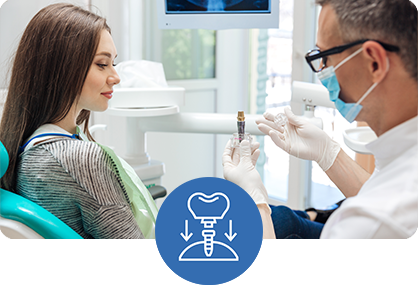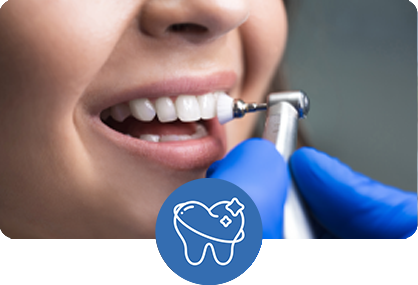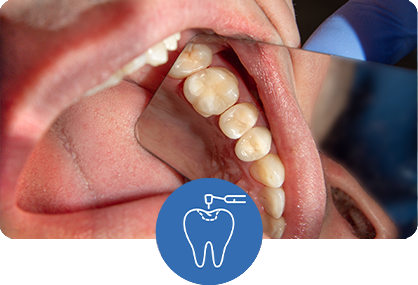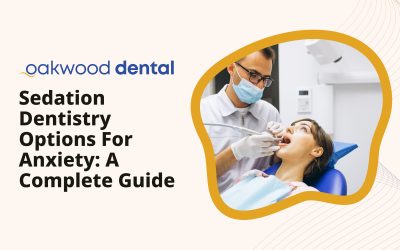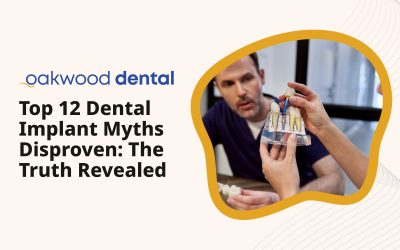What You’ll Learn About Dental Implants
- Different types of dental implants and their specific applications
- The components that make up a complete dental implant system
- Benefits of implants compared to traditional tooth replacement options
- Candidacy requirements for successful implant procedures
- Essential aftercare practices for long-term implant success
- Advanced options like full-mouth implant restoration
Key Takeaways
- Dental implants have a success rate exceeding 95% and can last a lifetime with proper care
- Endosteal implants are the most common type, used in 95% of cases when sufficient bone is present
- Alternative options like subperiosteal and zygomatic implants exist for patients with bone loss
- All-on-4 technology allows full-arch restoration with just four strategically placed implants
- Proper maintenance including specialized cleaning techniques is crucial for long-term implant success
- Immediate load implants can provide same-day teeth for qualified candidates
Introduction to Dental Implants
Dental implants have changed how dentists replace missing teeth, offering a permanent solution that works and looks like natural teeth. At Oakwood Dental Clinics, we see how missing teeth can affect your daily life, from making it hard to eat to feeling shy about your smile.
Dental implants are titanium posts surgically placed into the jawbone to serve as artificial tooth roots. These biocompatible posts integrate with your natural bone through a process called osseointegration, creating a sturdy foundation for replacement teeth. Unlike traditional dentures or bridges, dental implants prevent bone deterioration and maintain facial structure while providing a permanent solution for tooth loss.
The modern dental implant has evolved significantly since its development in the mid-20th century. Today’s implants utilize advanced materials and techniques to achieve success rates exceeding 95% in healthy patients. The titanium used in implants has remarkable biocompatibility properties, allowing it to form a strong bond with human bone tissue without triggering rejection or inflammatory responses. This revolutionary approach to tooth replacement has transformed countless lives, restoring not just dental function but also confidence and quality of life for millions of patients worldwide.
Basic Components of Dental Implant Systems
Before delving into the different types of dental implants, it’s important to understand the three main components that make up a complete dental implant system:
1. The Implant Fixture: This is the actual titanium post that’s surgically embedded into the jawbone. It serves as the artificial tooth root and provides the foundation for the entire restoration. The fixture is typically made from medical-grade titanium with a specially treated surface to enhance osseointegration. The design often includes threads or other features that increase surface area and improve stability within the bone tissue.
2. The Abutment: This connector piece attaches to the implant fixture and extends above the gumline to support the final restoration. Abutments can be made from various materials including titanium, gold, or zirconia, depending on the specific requirements of your case. The abutment connects to the implant through a precision connection that prevents rotation and ensures stability under chewing forces.
3. The Prosthesis: This is the visible portion of the restoration—typically a crown, bridge, or denture—that resembles natural teeth in appearance and function. Modern prosthetics are typically crafted from high-strength ceramics or porcelain-fused-to-metal materials that provide both durability and natural aesthetics. The prosthesis is custom-designed to match your existing teeth in color, shape, and alignment.
Each component plays a vital role in the overall success and longevity of the dental implant. At Oakwood Dental Clinics, our specialists carefully select the most appropriate components based on your unique oral anatomy, bone density, and specific restoration needs. The precision engineering of these components working together creates a restoration that functions seamlessly with your natural dentition while providing optimal strength and stability for years to come.
Endosteal Implants: The Standard Choice
Endosteal implants are the most commonly used type of dental implant, making up approximately 95% of all implant procedures performed worldwide. These implants are directly placed into the jawbone and are typically shaped like small screws, cylinders, or blades. Their widespread use is due to their versatility, predictability, and excellent long-term success rates across a wide range of clinical situations.
Key Characteristics of Endosteal Implants:
Endosteal implants are typically made from biocompatible titanium, which allows for successful osseointegration with your jawbone. The titanium undergoes special surface treatments to enhance bone attachment at the microscopic level, creating a stronger bond between implant and bone. They most commonly feature a threaded design for maximum stability and are suitable for patients with adequate jawbone density and height. The threads increase the surface area in contact with bone and provide immediate mechanical stability upon placement. The procedure requires a two-stage surgical process with a healing period between implant placement and restoration attachment, allowing for complete integration before loading the implant with chewing forces.
These implants are super versatile and can support various types of prosthetics, from single crowns to full-arch bridges. Their high success rate and predictable outcomes make them the preferred choice for most dental implant procedures when sufficient bone structure is present. Modern endosteal implants come in various diameters and lengths to accommodate different anatomical situations and can be placed in virtually any area of the mouth with adequate bone support. Their proven track record of success spanning several decades has established them as the gold standard in implant dentistry.
Subperiosteal Implants: Alternative for Limited Bone Structure
For patients with insufficient jawbone height or density who are not candidates for bone grafting procedures, subperiosteal implants offer an alternative solution. Unlike endosteal implants, these are placed under the gum but on top of the jawbone, with a metal framework that protrudes through the gum to support the prosthetic teeth. This approach provides a solution for patients who would otherwise be unable to receive implant treatment due to anatomical limitations.
Key Characteristics of Subperiosteal Implants:
Subperiosteal implants use a custom-made metal framework that fits over the jawbone beneath the gum tissue. This framework is carefully designed based on detailed CT scans or physical impressions of the patient’s jaw anatomy to ensure precise adaptation to the bone surface. They’re primarily used for patients with significant bone loss who cannot undergo bone augmentation. The procedure requires detailed imaging to create a precise framework that fits the patient’s unique bone structure. Modern digital technologies have greatly improved the accuracy of these custom frameworks compared to older techniques. A major advantage is that they eliminate the need for extensive bone grafting procedures, which can significantly reduce treatment time and discomfort for patients with severe bone atrophy.
While less common than endosteal implants, subperiosteal implants still provide a viable solution for patients who might otherwise be limited to removable dentures. The framework design distributes forces across a broader area of the jawbone surface, which can be beneficial in cases of thin or fragile bone. At Oakwood Dental Clinics, we carefully evaluate each patient’s condition to determine if this type of implant would be beneficial. Though they represent a smaller percentage of implant procedures, subperiosteal implants remain an important option in the implant dentistry toolkit for addressing challenging cases.
Zygomatic Implants: Solution for Severe Maxillary Bone Loss
Zygomatic implants represent a specialized solution for patients with severe bone loss in the upper jaw (maxilla). Instead of being placed in the jawbone, these longer implants are anchored in the zygomatic bone (cheekbone), bypassing the need for extensive bone grafting in the upper jaw. This innovative approach has been life-changing for patients previously told they weren’t candidates for fixed implant restorations due to extreme maxillary atrophy.
Key Characteristics of Zygomatic Implants:
Zygomatic implants are significantly longer than standard implants (30-55mm compared to 10-15mm) and are specifically designed for upper jaw restoration when conventional implants aren’t possible. These extra-long implants traverse through or alongside the maxillary sinus to anchor in the dense zygomatic bone, providing exceptional stability even in cases of extreme bone loss. The procedure requires specialized training and expertise due to the complex anatomy involved. Surgeons must have intimate knowledge of the maxillofacial structures to safely place these implants without damaging vital structures. The major advantage is that they eliminate the need for sinus lifts and bone grafts, reducing treatment time by several months or even years in complex cases.
These implants are considered an advanced solution and are typically performed by oral surgeons with specific training in this technique. They allow patients with severe maxillary atrophy to receive fixed teeth without undergoing extensive reconstructive procedures, making them an excellent option for full-mouth restoration cases with challenging anatomical conditions. The development of zygomatic implants has significantly expanded the population of patients who can benefit from implant therapy, providing hope for those who were previously told fixed teeth weren’t possible. When performed by experienced clinicians, zygomatic implants have shown excellent long-term success rates comparable to conventional implants.
Mini Dental Implants: Less Invasive Alternative
Mini dental implants (MDIs) feature a smaller diameter than traditional implants, typically ranging from 1.8mm to 3mm compared to the standard 3.5mm to 6mm. Their smaller size allows for less invasive placement procedures and can be suitable for patients with limited bone width. These narrower implants require less bone volume for placement, opening up treatment possibilities for patients who might otherwise require bone augmentation.
Key Characteristics of Mini Dental Implants:
Mini dental implants have a one-piece design with the abutment already attached to the implant body, eliminating the need for a separate abutment connection and reducing potential points of failure. They’re often used to stabilize dentures or for front tooth replacements where space is limited and chewing forces are less intense. Their smaller size makes them particularly useful in narrow ridges where standard implants would require bone grafting. A major benefit is that they can often be placed in a single visit with minimal or no flap surgery, resulting in less tissue disruption and post-operative discomfort. The minimally invasive nature of the procedure often allows for immediate loading of the implant in suitable cases.
They also offer advantages like lower cost, faster healing time, and suitability for patients with insufficient bone width for standard implants. The reduced surgical trauma and treatment time make them an attractive option for elderly patients or those with medical conditions that might complicate more extensive procedures. While mini implants offer certain advantages, they may not be appropriate for all situations, particularly where significant bite forces are involved. At Oakwood Dental Clinics, we carefully evaluate each case to determine if mini implants would provide the optimal long-term solution for our patients’ needs, considering factors such as bone quality, bite forces, and restoration requirements.
All-on-4 and All-on-X Implant Systems
The All-on-4 concept represents a revolutionary approach to full-arch restoration, allowing an entire arch of replacement teeth to be supported by just four strategically placed implants. This technique, along with its variations (All-on-5, All-on-6, collectively known as All-on-X), has transformed the treatment options for patients with extensive tooth loss. The innovation lies not just in the number of implants used but in their strategic positioning to maximize available bone and provide optimal support for a full-arch prosthesis.
Key Characteristics of All-on-X Systems:
The All-on-X design features two anterior implants placed vertically and two posterior implants angled at up to 45 degrees. This specific configuration is carefully engineered to distribute forces optimally across the arch while avoiding anatomical limitations. This approach is ideal for full-arch restoration for edentulous patients or those requiring full-mouth extraction due to terminal dentition. One of the biggest advantages is that it often allows for immediate loading with a provisional prosthesis on the same day as implant placement, dramatically reducing the total treatment time compared to traditional approaches. Patients can literally walk in with failing teeth and walk out with a fixed set of functional teeth in a single day. The technique maximizes use of available bone, often eliminates the need for bone grafting, and provides immediate function.
The angled placement of the posterior implants in the All-on-4 technique allows for longer implants to be used while avoiding anatomical structures like the maxillary sinuses or mental foramina. This creates a wider base of support for the prosthesis despite using fewer implants. The tilted posterior implants also increase the anterior-posterior spread, improving biomechanical support and reducing cantilever forces on the final restoration. This innovative approach has made full-arch rehabilitation possible for many patients who would otherwise require extensive bone grafting procedures.
At Oakwood Dental Clinics, our specialists are extensively trained in All-on-X techniques, offering patients with extensive tooth loss the opportunity to receive fixed, natural-looking teeth with minimal recovery time. This approach has been particularly beneficial for patients who were previously told they weren’t candidates for implants due to bone loss. The final prosthesis is typically made from high-strength materials like zirconia or acrylic with a titanium framework, providing excellent durability while maintaining a natural appearance.
Implant-Supported Bridges and Dentures
Beyond single-tooth replacements, dental implants can support multi-tooth restorations like bridges and full dentures, providing significantly improved stability and function compared to traditional options. These implant-supported restorations combine the stability of dental implants with the efficiency of replacing multiple teeth with a single prosthesis, offering an optimal solution for patients with multiple or complete tooth loss.
Implant-Supported Bridges
Implant-supported bridges are an excellent solution when multiple adjacent teeth are missing. Unlike traditional bridges that rely on natural teeth for support, implant bridges are anchored by two or more implants, preserving the integrity of surrounding natural teeth. These bridges can replace anywhere from three to a full arch of teeth using strategically placed implants. The number of implants needed depends on the span of the bridge, bone quality, and bite forces in the area.
The key benefits of implant-supported bridges include no need to prepare adjacent healthy teeth, which preserves natural tooth structure and prevents potential complications with those teeth in the future. They also prevent bone loss in the edentulous area by providing stimulation to the underlying bone through the implants. Implant bridges allow more natural distribution of bite forces, reducing stress on individual implants and extending the lifespan of the restoration. They typically provide more comfort and stability than traditional bridges, as they’re anchored directly to the jawbone rather than relying on adjacent teeth.
Implant-Retained Dentures
For patients missing all teeth in an arch, implant-retained dentures offer dramatic improvements over conventional dentures. These can be designed as removable overdentures that snap onto implant attachments or as fixed dentures that are permanently secured to implants. Removable options typically use 2-4 implants with specialized attachments like locators or bars, while fixed solutions generally require 4-6 or more implants depending on the specific system used.
The key benefits of implant-retained dentures include elimination of denture movement and slippage during speaking and eating, which dramatically improves patient confidence and comfort. They provide improved chewing efficiency by up to 300% compared to conventional dentures, allowing patients to enjoy a wider variety of foods. These solutions prevent continued bone resorption by transmitting chewing forces to the jawbone, maintaining facial structure and preventing the aged appearance that often develops with long-term conventional denture use. They eliminate the need for denture adhesives and the ability to have a smaller, more comfortable prosthesis design without the extended flanges needed for conventional denture stability.
At Oakwood Dental Clinics, we work closely with patients to determine the optimal number of implants needed to support their specific prosthetic needs, ensuring the most functional and aesthetic outcome possible. The decision between fixed and removable options depends on factors including bone availability, budget considerations, and patient preference regarding maintenance and cleaning requirements.
Candidacy and Evaluation for Dental Implants
While dental implants offer exceptional benefits, not everyone is an immediate candidate for the procedure. A thorough evaluation is essential to determine suitability and identify any preparatory treatments that might be necessary. This comprehensive assessment helps develop a personalized treatment plan that addresses your specific oral health situation and restoration goals.
Key Factors in Implant Candidacy:
1. Bone Quantity and Quality: Sufficient bone volume is necessary to support the implant. Advanced imaging techniques like cone beam CT scans help assess bone dimensions precisely. We evaluate not just the height and width of available bone but also its density and mineralization, as these factors significantly impact implant stability. Different implant systems have varying minimum requirements for bone dimensions, allowing us to select the most appropriate option for your specific situation.
2. Oral and General Health: Active gum disease, uncontrolled diabetes, or certain medications may affect implant success and need to be addressed before proceeding. Conditions like periodontitis must be treated and stabilized prior to implant placement to prevent infection of the implant site. Systemic conditions that affect healing, such as uncontrolled diabetes or autoimmune disorders, may require consultation with your physician to optimize treatment outcomes.
3. Smoking Status: Smoking significantly reduces implant success rates and increases complication risks. Cessation is strongly recommended before implant therapy. Studies show that smokers experience implant failure rates up to twice as high as non-smokers due to reduced blood flow to tissues and impaired healing capacity. Even reducing smoking during the critical healing phase can improve outcomes.
4. Bite Forces and Habits: Conditions like bruxism (teeth grinding) may require additional planning to ensure long-term implant success. Patients with severe grinding habits may benefit from night guards or other protective devices to distribute forces and protect their implant restorations from excessive stress.
5. Age Considerations: While there is no upper age limit for implants, patients should have completed jaw growth (typically by late teens). Older adults can be excellent candidates for implants, often experiencing significant quality of life improvements compared to conventional prosthetics.
For patients with insufficient bone, several preparatory procedures may be recommended:
– Bone Grafting: Adding bone material to deficient areas to create adequate volume for implant placement. Materials may include your own bone harvested from another site, processed donor bone, or synthetic bone substitutes.
– Sinus Lift: Increasing bone height in the posterior maxilla by elevating the sinus membrane and placing graft material beneath it. This procedure is commonly needed for upper molar implant placement when the sinus has expanded following tooth loss.
– Ridge Augmentation: Rebuilding the width of the alveolar ridge when it has become too narrow to accommodate an implant. This is often performed using a combination of bone grafts and membranes to restore the original dimensions of the jawbone.
– Guided Tissue Regeneration: Using membranes to direct bone growth and prevent soft tissue from invading the graft site during healing. These specialized membranes create a protected space for bone regeneration while excluding faster-growing soft tissues.
At Oakwood Dental Clinics, our comprehensive evaluation process ensures that we identify and address any potential concerns before proceeding with implant treatment, maximizing the chances for long-term success. We believe in taking the time to properly assess and prepare for implant therapy, as this careful approach leads to more predictable and satisfying outcomes for our patients.
The Dental Implant Procedure: What to Expect
Understanding the dental implant process helps patients prepare mentally and physically for the treatment journey. While each case is unique, most implant procedures follow a similar sequence of steps. Knowing what to expect at each stage can help reduce anxiety and ensure you’re properly prepared for the process.
Typical Implant Treatment Timeline:
1. Initial Consultation and Planning:
During this phase, you’ll have a comprehensive examination including detailed imaging. We’ll discuss all your treatment options and expected outcomes, then develop a personalized treatment plan tailored to your specific needs. This planning stage is crucial for ensuring the best possible results. Modern implant planning utilizes 3D imaging technology to visualize your bone structure and plan the precise position and angle of each implant. This digital approach allows us to identify potential challenges before surgery and create surgical guides that ensure accurate implant placement.
2. Preparatory Procedures (if needed):
Some patients require preliminary work before implants can be placed. This might include extractions of compromised teeth or bone grafting procedures to build up the jawbone. Major bone grafts typically require a healing period of 3-6 months before implants can be placed, allowing the new bone to integrate properly. For patients requiring extractions, we may sometimes offer “socket preservation” grafting, where bone graft material is placed immediately after extraction to minimize bone loss during healing and optimize the site for future implant placement.
3. Implant Placement Surgery:
The actual implant placement is performed under local anesthesia or sedation, depending on your preference and the complexity of your case. During this procedure, the implant fixtures are precisely positioned in the jawbone. In some cases, healing caps or immediate temporary restorations might be placed at the same time. The surgical appointment typically takes 1-2 hours per implant, though this varies based on case complexity. Most patients report that implant surgery is more comfortable than they anticipated, with minimal post-operative discomfort that can be managed with over-the-counter pain medications.
4. Osseointegration Period:
After placement, the implants need time to fuse with your jawbone through osseointegration. This typically takes 2-6 months, depending on the implant location and your bone quality. During this time, you’ll have regular check-ups to monitor your healing progress. The integration time varies based on several factors, including the location in the mouth (lower jaw implants generally integrate faster than upper jaw implants), bone density, and individual healing capacity. This waiting period is crucial for ensuring the implant has achieved sufficient stability to withstand the forces of chewing.
5. Abutment Placement (if not done during initial surgery):
Once osseointegration is complete, a minor procedure is performed to expose the implant and attach the connector (abutment). Impressions are then taken for fabrication of your final restoration. This appointment is typically brief and requires only local anesthesia. The gum tissue is allowed to heal around the abutment for approximately two weeks before the final restoration is attached, creating a natural emergence profile for the crown.
6. Final Restoration Delivery:
The last step involves fitting and adjusting your crown, bridge, or denture. We’ll verify proper fit, function, and aesthetics, and provide detailed instructions for care and maintenance. Modern CAD/CAM technology allows for the creation of highly precise and aesthetic restorations that blend seamlessly with your natural teeth. We take care to ensure proper occlusion (bite relationship) to prevent excessive forces on the implant and ensure comfortable function.
At Oakwood Dental Clinics, we utilize advanced surgical guides and planning software to ensure precise implant placement, often allowing for less invasive procedures and more predictable outcomes. Our team provides detailed pre-operative and post-operative instructions to ensure a smooth treatment experience. The investment of time in the implant process pays dividends in the form of a restoration that can potentially last a lifetime with proper care.
Immediate Load Implants vs. Traditional Protocol
Advances in implant dentistry have made immediate loading of dental implants possible in many cases, allowing patients to receive provisional teeth on the same day as implant placement rather than waiting months for the traditional healing period. This innovation has dramatically improved the patient experience by eliminating the need to go without teeth during the healing phase.
Immediate Load Implants:
Immediate load implants allow for placement of a provisional restoration within 48 hours of implant surgery. This revolutionary approach means patients can receive functional teeth almost immediately after implant placement. This approach requires excellent initial implant stability (measured by insertion torque values typically exceeding 35 Ncm) and is best suited for patients with good bone quality and quantity. Special implant designs with aggressive thread patterns are often used to achieve the necessary primary stability for immediate loading. It’s particularly beneficial for visible areas where temporary tooth replacement is essential and may be used in All-on-4 and similar full-arch restoration protocols.
The biggest advantage is psychological and functional – you don’t have to go without teeth during the healing period. Imagine walking into the dental office with missing teeth and walking out the same day with a complete smile! This immediate transformation can have profound effects on a patient’s confidence and quality of life. Additionally, the provisional restoration helps shape the gum tissue during healing, potentially creating more aesthetic final results. It’s important to note that immediately loaded restorations are typically designed to minimize excessive forces during the healing period, with the final restoration placed after complete osseointegration.
Traditional Loading Protocol:
The traditional approach involves a healing period of 2-6 months before attaching restorations. During this time, the implant remains covered by gum tissue or protected by a low-profile healing abutment. This may be more appropriate for patients with compromised bone or medical conditions and is often recommended for posterior implants that will bear significant chewing forces. The traditional protocol may include either a one-stage approach (where a healing abutment protrudes through the gum during osseointegration) or a two-stage approach (where the implant is completely covered by gum tissue and later uncovered in a minor second procedure).
While it requires more patience, this approach generally has slightly higher success rates in challenging cases. By allowing the implant to integrate without any functional loading, the traditional protocol maximizes the chances for successful osseointegration, particularly in cases with less than ideal bone quality or quantity. For patients with bruxism or other high-force conditions, this conservative approach may provide greater long-term predictability.
The decision between immediate and delayed loading is based on multiple factors, including bone density, implant location, patient health, and the specific implant system being used. At Oakwood Dental Clinics, we carefully evaluate each case to determine the most appropriate loading protocol that balances immediate aesthetic concerns with long-term success. Our experience allows us to identify suitable candidates for immediate loading while recommending the more conservative approach when it would provide better long-term outcomes.
Caring for Your Dental Implants
Proper maintenance is crucial for ensuring the longevity of dental implants. While implants aren’t susceptible to decay like natural teeth, they can still be affected by peri-implantitis, an inflammatory condition similar to periodontitis that can lead to implant failure if not addressed. Establishing good care habits from the beginning can significantly extend the lifespan of your implant restorations.
Essential Implant Care Practices:
1. Daily Oral Hygiene:
Taking care of your implants daily is super important. You should brush twice daily with a soft-bristled toothbrush to avoid scratching the implant surfaces. Electric toothbrushes with pressure sensors can be particularly beneficial as they help prevent applying excessive force that could damage the implant-tissue interface. Use low-abrasive, antimicrobial toothpaste specifically designed for implants, as regular toothpastes may contain abrasive particles that can scratch implant surfaces and create areas for bacterial accumulation. Clean between implants with specialized floss, interdental brushes, or water flossers – these tools are great for getting into those hard-to-reach spaces around implants. Water flossers are particularly effective for cleaning around implant-supported bridges or fixed dentures where traditional floss can’t reach. Some patients may benefit from antimicrobial mouth rinses if recommended by their dentist, particularly those with a history of periodontal disease or implant inflammation.
2. Regular Professional Maintenance:
Professional care is just as important as your home routine. Attend scheduled hygiene appointments every 3-6 months so we can professionally clean your implants using specialized instruments that are safe for implant surfaces. Traditional metal scaling instruments can damage implant surfaces, so we use specialized plastic or titanium instruments designed specifically for implant maintenance. These regular visits also allow us to evaluate your implant health and stability and periodically take X-rays to monitor bone levels around your implants. Early detection of any bone loss or inflammation is crucial, as these conditions are much easier to treat in their initial stages.
3. Protective Measures:
If you have bruxism (teeth grinding), use a night guard to protect your implants from excessive forces. Custom-made occlusal guards distribute bite forces evenly and prevent the concentrated stress that can lead to implant complications or prosthetic damage. Avoid using your implant teeth as tools to open packages or bite hard objects – they’re strong, but not indestructible! While the titanium implant itself is extremely durable, the ceramic or acrylic components of the restoration can chip or fracture under extreme forces. If you smoke, quitting will significantly improve implant longevity. Studies show that smoking not only increases the risk of implant failure but also contributes to bone loss around existing implants. And always address any changes in fit or comfort promptly – early intervention can prevent small issues from becoming big problems. Even minor symptoms like bleeding around an implant or slight discomfort when chewing should be evaluated promptly.
At Oakwood Dental Clinics, we provide detailed maintenance instructions and personalized care recommendations for each implant patient. Our hygienists are specifically trained in implant maintenance techniques to ensure the long-term health of your restoration. With proper care, dental implants have the potential to last a lifetime, making them not just a restoration but a true investment in your long-term oral health and quality of life.
Comparing Dental Implants to Other Tooth Replacement Options
While dental implants have revolutionized tooth replacement, they represent one of several available options. Understanding how implants compare to alternatives helps patients make informed decisions about their dental care. Each tooth replacement method has its own set of advantages and limitations that should be considered in the context of your specific situation, goals, and budget.
Dental Implants vs. Removable Dentures:
| Feature | Dental Implants | Removable Dentures |
|---|---|---|
| Stability | Fixed and secure | May slip or move |
| Chewing Efficiency | Near-normal function | 25-30% of natural teeth |
| Bone Health | Preserves bone structure | Accelerates bone loss |
| Speech | Natural speech patterns | May affect pronunciation |
| Taste | Unaffected | May cover palate |
| Daily Care | Brush and floss normally | Remove for cleaning |
The long-term value proposition of dental implants becomes clear when considering their extended lifespan and the preservation of oral health they provide. While the initial investment is higher, implants often prove more economical over time when factoring in the replacement costs and ongoing maintenance requirements of alternatives. At Oakwood Dental Clinics, we help patients evaluate all their options to make the choice that best aligns with their health goals, lifestyle, and financial considerations.
Advanced Implant Technologies and Future Developments
The field of implant dentistry continues to evolve with technological advances that improve outcomes and expand treatment possibilities. These innovations are making implant procedures more predictable, less invasive, and accessible to a broader range of patients.
Current Advanced Technologies:
Digital implant planning using cone beam CT scans and specialized software allows for virtual placement of implants before surgery, optimizing positioning and avoiding anatomical structures. This technology enables the creation of surgical guides that ensure precise implant placement exactly as planned. Computer-aided design and manufacturing (CAD/CAM) technology produces custom abutments and restorations with exceptional accuracy, improving fit and aesthetics while reducing the number of appointments needed.
Guided surgery systems use 3D-printed surgical templates that fit over your teeth or gums, guiding the drill to the exact planned position and angle. This approach often allows for flapless surgery, reducing surgical trauma and accelerating healing. Some systems even allow for “teeth in a day” protocols where the final restoration is pre-fabricated based on the digital plan and delivered immediately after implant placement.
Emerging Technologies:
Research into new implant surface treatments aims to accelerate osseointegration and improve success rates in challenging cases. Nanotechnology is being applied to create surface modifications at the molecular level that enhance bone cell attachment and proliferation. Growth factors and bioactive coatings are being developed to stimulate faster bone formation around implants, potentially reducing healing times significantly.
3D bioprinting technology holds promise for creating custom bone grafts using a patient’s own cells, potentially eliminating the need for donor bone or synthetic materials. Researchers are also exploring the use of stem cells to regenerate bone and soft tissue around implants, which could revolutionize treatment for patients with severe bone loss.
Smart implants with embedded sensors may soon provide real-time data about implant health, allowing for early detection and intervention of potential problems. These devices could monitor factors like bacterial levels, pH changes, and mechanical stress, alerting both patients and dentists to issues before they become serious.
At Oakwood Dental Clinics, we stay at the forefront of these technological advances, regularly updating our equipment and techniques to provide patients with the most advanced implant solutions available. The future of implant dentistry is bright, with ongoing innovations promising even better outcomes and expanded treatment options for patients seeking tooth replacement solutions.
Conclusion: Making the Right Choice for Your Dental Health
Dental implants represent a remarkable advancement in restorative dentistry, offering solutions that were impossible just a generation ago. From the versatile endosteal implants that serve 95% of cases to specialized options like zygomatic implants for severe bone loss, modern implant dentistry provides answers for virtually every tooth replacement need.
The variety of implant types and systems available today means that almost anyone missing teeth can find a suitable solution. Whether you need a single tooth replaced, multiple teeth restored, or an entire arch reconstructed, there’s an implant approach designed to meet your specific needs. The key is working with experienced dental professionals who can evaluate your unique situation and recommend the most appropriate treatment plan.
At Oakwood Dental Clinics, we understand that choosing dental implants is a significant decision that impacts not just your oral health but your overall quality of life. Our comprehensive approach ensures that every aspect of your treatment is carefully planned and executed, from the initial evaluation through long-term maintenance. We take pride in helping patients understand their options and make informed decisions about their dental care.
The benefits of dental implants extend far beyond simple tooth replacement. They preserve bone structure, maintain facial aesthetics, restore natural chewing function, and provide the confidence that comes with a stable, beautiful smile. With success rates exceeding 95% and the potential to last a lifetime with proper care, implants represent not just a treatment but an investment in your future health and happiness.
If you’re considering dental implants, we encourage you to schedule a consultation at Oakwood Dental Clinics. Our team of specialists will evaluate your specific needs, discuss your options in detail, and develop a personalized treatment plan that aligns with your goals and expectations. With the right implant solution and proper care, you can enjoy the benefits of strong, natural-looking teeth for decades to come.
Remember, the journey to dental implants is unique for each patient. Some may achieve their new smile in a matter of months, while others may require preparatory procedures that extend the timeline. What remains constant is our commitment to providing exceptional care and achieving optimal outcomes for every patient who trusts us with their dental health.
The field of implant dentistry continues to advance, with new technologies and techniques constantly emerging to improve patient experiences and outcomes. By choosing dental implants today, you’re not just restoring your teeth—you’re investing in a solution that will continue to benefit from ongoing innovations in materials, techniques, and maintenance protocols. Your new smile isn’t just for today; it’s designed to serve you well into the future, adapting and enduring as dental science continues to evolve.

 718-979-2121
718-979-2121